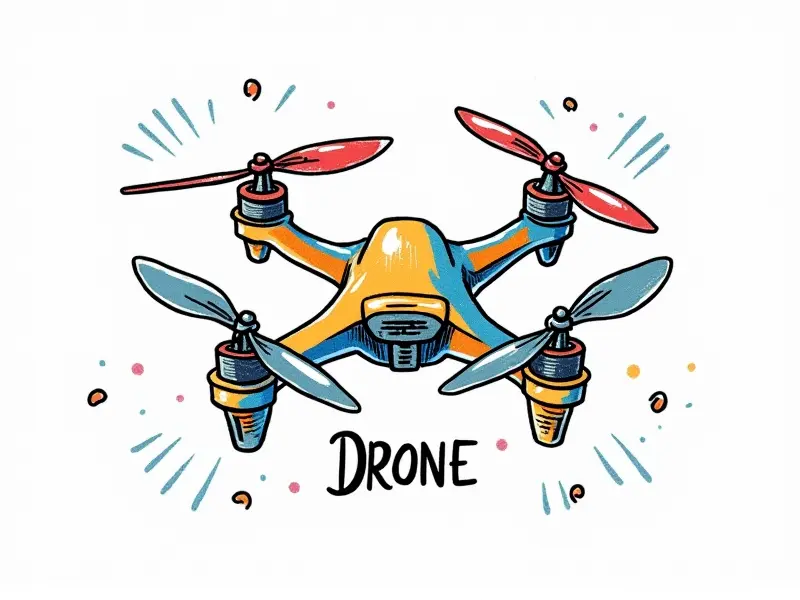FPV flight modes?

Understanding FPV Flight Modes
First-person view (FPV) flying has revolutionized the world of drone racing and aerial photography. One of the most critical aspects of mastering this exhilarating hobby is understanding and utilizing various FPV flight modes. These modes allow pilots to customize their drones for specific tasks, enhancing performance and control.
Mastering FPV Drone Flight Modes
To become proficient in FPV flying, it's essential to grasp the nuances of different flight modes. Each mode offers unique advantages and is tailored to meet specific needs, whether you're a beginner or an advanced pilot. By mastering these settings, you can achieve better control over your drone during races, aerial photography sessions, or other FPV activities.
Top FPV Flight Modes Explained
The most popular FPV flight modes include:
- Acro Mode: This mode provides the least amount of stabilization and is ideal for experienced pilots who prefer full manual control.
- Gyro Lock: Aids in maintaining a steady hover, making it perfect for aerial photography or videography.
- Turbo Mode: Increases speed and responsiveness, essential for high-speed racing scenarios.
How to Use FPV Flight Modes
Using FPV flight modes effectively requires practice and familiarity with your drone's capabilities. Start by selecting the appropriate mode based on your intended activity and gradually adjust settings as needed:
- Identify Your Needs: Determine whether you need stability, speed, or manual control.
- Practice in Safe Areas: Experiment with different modes in a controlled environment to understand their effects.
- Tweak Settings Gradually: Fine-tune your drone's settings incrementally for optimal performance.
FPV Flight Modes for Beginners
For newcomers to FPV flying, it’s crucial to start with simpler modes that offer more stability and control assistance. Gyro Lock is an excellent choice for beginners as it helps maintain a steady hover, making it easier to learn basic flight maneuvers.
Advanced FPV Flight Mode Techniques
Once you have mastered the basics, you can explore advanced techniques that leverage more complex modes like Turbo Mode. These settings are designed for high-performance tasks and require a higher level of skill to use effectively. Practice precision maneuvers in Turbo Mode to enhance your racing skills.
Optimizing Your FPV Drone Modes
To get the most out of your drone, continuously refine your flight modes based on real-world performance data:
- Analyze Flight Data: Review telemetry and video footage to identify areas for improvement.
- Adjust Settings Iteratively: Make small adjustments and test them in various conditions.
- Leverage Community Feedback: Engage with other FPV pilots to gain insights and tips.
Best FPV Flight Mode Settings
The ideal settings vary depending on your drone model, flying environment, and personal preferences. Experimentation is key to finding the perfect balance of stability, responsiveness, and control:
- Balance Stability vs Speed: Adjust gyro sensitivity and pitch/roll rates for optimal performance.
- Calibrate Sensors: Ensure accurate sensor readings for precise flight data.
- Test in Diverse Conditions: Evaluate settings across different weather conditions and locations.
How to Switch FPV Flight Modes
Safely switching between modes during a flight is crucial for adapting to changing circumstances. Most modern drones allow you to switch modes via the transmitter or onboard control system:
- Use Dedicated Buttons: Many transmitters have dedicated buttons for quick mode changes.
- Configure Switches: Set up your transmitter switches to easily toggle between preferred modes.
- Practice Mode Changes: Familiarize yourself with the process in a safe environment before using it during actual flights.
Beginner's Guide to FPV Flight Modes
If you're new to FPV flying, start by familiarizing yourself with basic flight modes and gradually move towards more advanced settings:
- Start Simple: Begin with Gyro Lock or similar stable modes.
- Learn Basic Maneuvers: Practice hovering, turning, and flying in straight lines.
- Expand Your Skill Set: As you gain confidence, experiment with more complex modes like Acro Mode and Turbo Mode.
Choosing the Right FPV Flight Mode
Selecting the appropriate flight mode depends on your specific needs and objectives. Consider factors such as intended use (racing vs photography), environmental conditions, and personal skill level when choosing a mode:
- Racing Scenarios: Opt for Turbo Mode or similar high-speed settings.
- Aerial Photography: Use Gyro Lock or other stable modes to ensure smooth shots.
- General Flying: Choose a balanced mode that offers both stability and maneuverability.
Conclusion
Mastery of FPV flight modes is essential for any pilot looking to enhance their drone's performance. By understanding the basics, experimenting with different settings, and continuously refining your approach, you can unlock new levels of control and precision in your flying adventures. Whether you're a beginner or an experienced racer, there’s always room to improve by leveraging the right flight modes.

